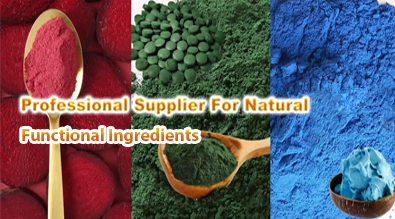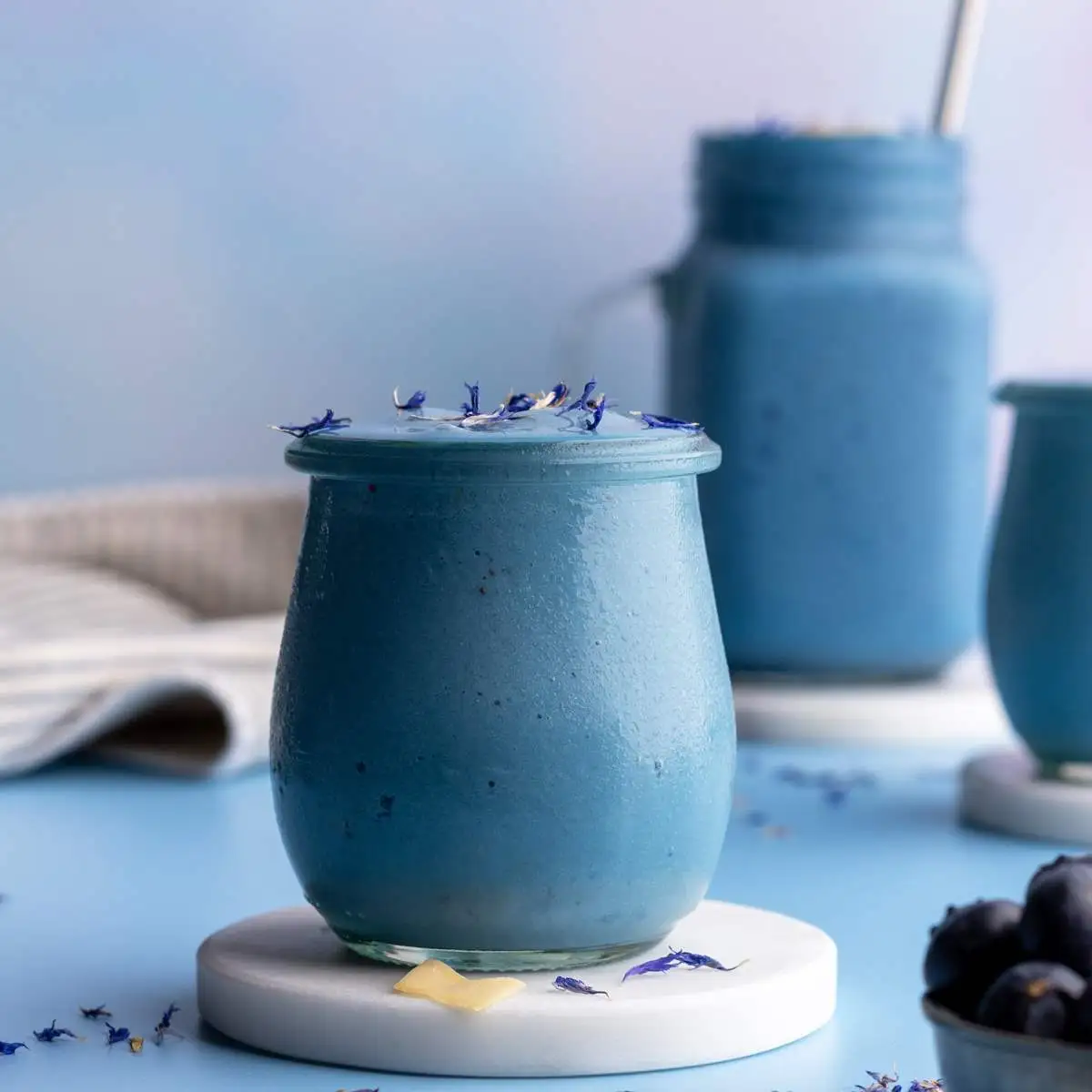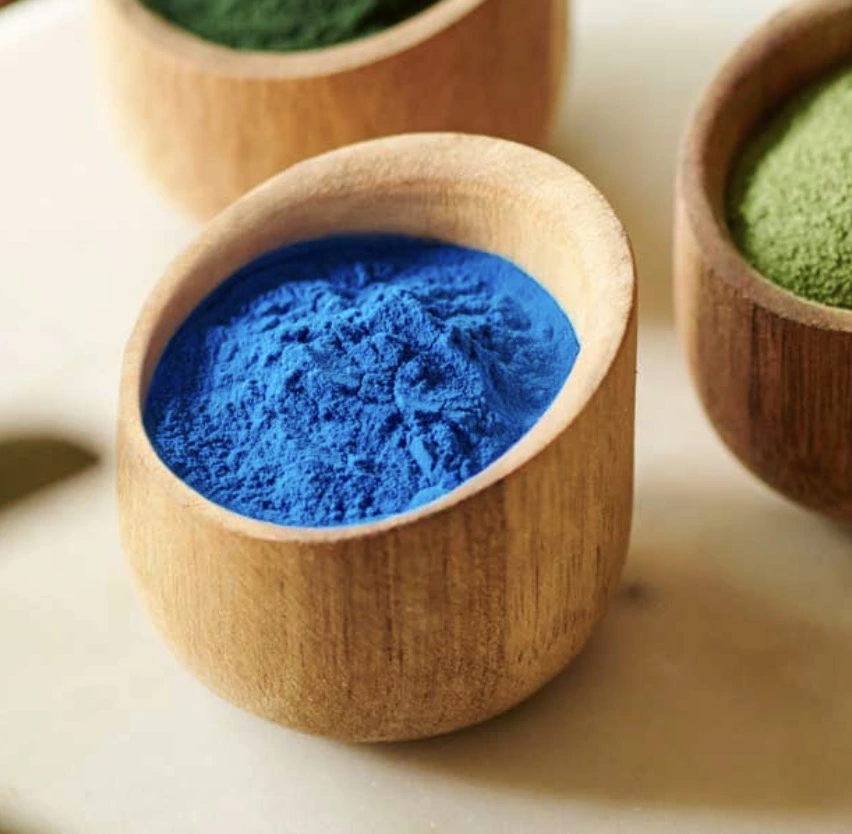Differences between natural and synthetic astaxanthin
Astaxanthin, a powerful antioxidant carotenoid, has gained significant attention in the health and wellness industry. As an astaxanthin powder supplier, we often receive inquiries about the differences between natural and synthetic forms of this remarkable compound. In this comprehensive guide, we'll explore the unique characteristics, benefits, and applications of both natural and synthetic astaxanthin, helping you make informed decisions about which type might be best suited for your needs.

Natural astaxanthin benefits for health
Natural astaxanthin, derived primarily from the microalgae Haematococcus pluvialis, offers a wide array of health benefits. Let's delve into the specific advantages of this potent antioxidant.
Potent antioxidant properties
Natural astaxanthin boasts remarkable antioxidant capabilities, surpassing many other well-known antioxidants. Its unique molecular structure allows it to neutralize multiple free radicals simultaneously, providing superior protection against oxidative stress. This potent antioxidant activity contributes to numerous health benefits, including reduced inflammation, improved cardiovascular health, and enhanced cellular function.
Skin health and anti-aging effects
One of the most sought-after benefits of natural astaxanthin is its positive impact on skin health. As a powerful antioxidant, it helps protect the skin from UV damage, reducing the appearance of fine lines and wrinkles. Additionally, it has been shown to improve skin elasticity, moisture retention, and overall complexion. These anti-aging properties make natural astaxanthin a popular ingredient in skincare products and supplements aimed at promoting youthful, radiant skin.
Eye health and vision support
Natural astaxanthin has demonstrated significant benefits for eye health and vision. Its ability to cross the blood-retina barrier allows it to protect the delicate structures of the eye from oxidative damage. Research suggests that product may help prevent age-related macular degeneration, reduce eye strain, and improve visual acuity. These properties make it a valuable supplement for those looking to maintain optimal eye health, especially in today's digital age.

Synthetic astaxanthin uses in supplements
While natural astaxanthin has garnered considerable attention, synthetic astaxanthin also plays a role in the supplement industry. Let's explore the characteristics and applications of synthetic astaxanthin.
Production process and chemical structure
Synthetic astaxanthin is produced through chemical synthesis, typically using petrochemical sources. The resulting compound shares the same chemical formula as natural astaxanthin but differs in its stereochemistry. Synthetic astaxanthin consists of a mixture of stereoisomers, while natural product primarily contains a single stereoisomer. This structural difference can impact the compound's bioavailability and efficacy in the body.
Cost-effectiveness and scalability
One of the primary advantages of synthetic astaxanthin is its cost-effectiveness and scalability in production. The chemical synthesis process allows for large-scale manufacturing at a lower cost compared to natural astaxanthin extraction. This cost advantage has made synthetic astaxanthin an attractive option for some supplement manufacturers looking to incorporate the compound into their products at a more competitive price point.
Regulatory considerations and labeling
When it comes to regulatory aspects, synthetic astaxanthin faces different considerations compared to its natural counterpart. In some regions, synthetic product may require additional safety assessments or labeling requirements. Manufacturers using synthetic astaxanthin must adhere to specific regulations regarding its use in supplements and clearly indicate its synthetic origin on product labels. These regulatory factors can influence the choice between natural and synthetic astaxanthin for supplement formulations.

How to choose quality astaxanthin products?
As an astaxanthin powder supplier, we understand the importance of selecting high-quality products. Here are some key factors to consider when choosing astaxanthin supplements or ingredients.
Source verification and traceability
When evaluating astaxanthin products, it's crucial to verify the source and ensure traceability. For natural product, look for suppliers who can provide detailed information about the cultivation and extraction process of Haematococcus pluvialis. Reputable astaxanthin powder suppliers should be able to offer documentation on the origin of their products, including cultivation methods, harvesting practices, and extraction techniques. This transparency helps ensure the authenticity and quality of the astaxanthin you're purchasing.
Purity and concentration
The purity and concentration of astaxanthin products are essential factors in determining their efficacy. High-quality natural astaxanthin should have a concentration of at least 5% astaxanthin, with some premium products offering concentrations up to 10% or higher. When considering synthetic astaxanthin, it's important to verify the purity of the compound and ensure it meets regulatory standards. Look for products that provide third-party lab testing results to confirm the purity and concentration of the astaxanthin.
Bioavailability and formulation
The bioavailability of astaxanthin can significantly impact its effectiveness in the body. Natural product from Haematococcus pluvialis is often considered to have superior bioavailability due to its esterified form and the presence of supportive compounds found in the algae. When evaluating astaxanthin products, consider formulations that enhance bioavailability, such as those that include natural lipids or utilize advanced delivery systems. These formulations can help improve the absorption and utilization of astaxanthin in the body.
Third-party certifications and quality assurance
Reputable astaxanthin powder suppliers should prioritize quality assurance and seek third-party certifications to validate their products. Look for suppliers who adhere to Good Manufacturing Practices (GMP) and have obtained relevant certifications such as ISO, HACCP, or organic certifications. These quality standards help ensure that the products meet rigorous safety and purity requirements. Additionally, consider suppliers who offer comprehensive testing and analysis, including contaminant screening and potency verification.
Sustainability and environmental considerations
As consumers become increasingly conscious of environmental impact, it's important to consider the sustainability practices of astaxanthin suppliers. For natural product, look for suppliers who employ sustainable cultivation methods for Haematococcus pluvialis, such as closed photobioreactor systems that minimize water usage and environmental impact. Some suppliers may also offer certifications related to sustainable practices or carbon footprint reduction. By choosing environmentally responsible suppliers, you can support the long-term sustainability of astaxanthin production.

Conclusion
Understanding the differences between natural and synthetic astaxanthin is crucial for making informed decisions about supplement formulations and product development. Natural astaxanthin, derived from Haematococcus pluvialis, offers potent antioxidant properties and a wide range of health benefits. Synthetic astaxanthin provides a cost-effective alternative but may differ in bioavailability and efficacy. When choosing astaxanthin products, consider factors such as source verification, purity, bioavailability, and quality assurance to ensure you're selecting the best option for your needs.
At Yangge Biotech, we specialize in providing high-quality natural plant extracts, including premium astaxanthin powder. Our commitment to quality, innovation, and customer satisfaction sets us apart as a trusted supplier in the industry. Whether you're looking to incorporate astaxanthin into your supplements, skincare products, or functional foods, we have the expertise and products to meet your needs. To learn more about our astaxanthin offerings and how we can support your product development, please contact us at info@yanggebiotech.com.
FAQ
Q: Can we get some samples to test before purchasing?
A: Of course, we can provide free samples of 20 to 100 grams, but the shipping cost is at the customer's expense. The shipping cost can be deducted from the next order, or the samples can be sent through your courier account.
Q: Do your products have relevant certifications?
A: Yes, our products are certified for HALAL, ISO, HACCP, Kosher, and other certifications.
Q: What is the minimum order quantity (MOQ)?
A: Small batches of samples can be customized according to your requirements.
Q: Do you offer OEM and ODM services? Can the formula be customized based on our own?
A: Of course, we provide ODM and OEM services to many customers. Our product range includes softgels, capsules, tablets, sachets, granules, and private label services. Simply contact us and let us know your requirements. Our experienced R&D team can also develop new products with specific formulas.
Please contact us to design your own branded products.
Q: How do you handle quality complaints?
A: First, we have a comprehensive quality control SOP. We provide authoritative third-party inspection reports for almost all products before shipment to minimize the possibility of quality issues. Second, we have a comprehensive return and exchange procedure. If there is a genuine quality dispute, we will strictly follow the SOP.
Q: How do you ship? How long does delivery take?
A: For small orders, we typically use DHL, UPS, EMS, FedEx, or TNT. Delivery typically takes 3-7 days. We also offer air and sea freight services. We have a strong freight forwarding team and can provide you with a one-stop service, including DDP and DDU.
Q: What are your payment terms?
A: 100% prepayment, payable by T/T, Western Union, MoneyGram, or PayPal.
Q: What is the shelf life of your products?
A: 2 years with proper storage.
Q: Is the packaging environmentally friendly?
A: We attach great importance to environmental protection and are constantly improving our product packaging. Some products are packaged in recyclable paper. Packaging materials are carefully selected to ensure product safety during transportation and storage, and to minimize environmental impact. We are committed to achieving a balance between environmental friendliness and practicality in our product packaging, and to contributing to sustainable development.
References
1. Ambati, R. R., Phang, S. M., Ravi, S., & Aswathanarayana, R. G. (2014). Astaxanthin: Sources, extraction, stability, biological activities and its commercial applications—A review. Marine drugs, 12(1), 128-152.
2. Capelli, B., & Cysewski, G. R. (2013). The world's best kept health secret: Natural astaxanthin. Cyanotech Corporation.
3. Fassett, R. G., & Coombes, J. S. (2011). Astaxanthin: a potential therapeutic agent in cardiovascular disease. Marine drugs, 9(3), 447-465.
4. Kidd, P. (2011). Astaxanthin, cell membrane nutrient with diverse clinical benefits and anti-aging potential. Alternative Medicine Review, 16(4), 355-364.
5. Yamashita, E. (2013). Astaxanthin as a medical food. Functional Foods in Health and Disease, 3(7), 254-258.

Based on your location and order quantity, you will have the opportunity to receive a limited time free shipping promotion!

Who we are


